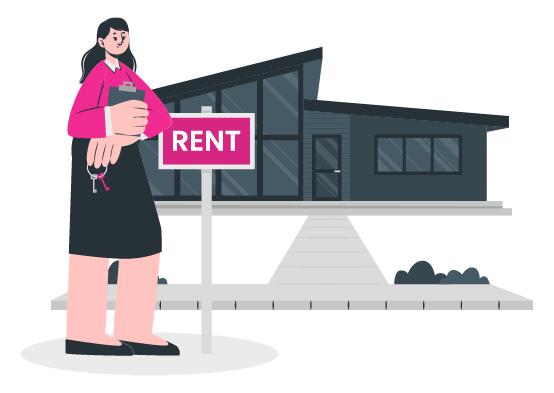When you’re renting out property whether it’s a house, apartment, or even just a single room it’s easy to assume that similar properties in the same location should command the same rent. But is that legally required? Can two landlords charge significantly different rents for properties that appear nearly identical? These are questions many Irish landlords and tenants alike often wonder about.
If you’re a property owner trying to determine what rent you should charge, this guide will break down the legal, ethical, and market-driven aspects of rental pricing. And yes, we’ll introduce you to a powerful rental estimate tool that helps cut through the guesswork and ensures you’re staying competitive and compliant.
Understanding Rent Differences: What the Law Says
In Ireland, there’s no blanket law that demands landlords charge the same rent for similar properties. However, that doesn’t mean you can price your rental without any restrictions.
The Residential Tenancies Board (RTB) governs rental laws in Ireland. If your property is in a Rent Pressure Zone (RPZ) an area where rent increases are capped you must follow strict guidelines on how much you can increase the rent annually. But within those zones, landlords can legally charge different rents for similar units, provided each rent level was set within the limits at the time of tenancy.
In non-RPZ areas, the rent can be set freely at the start of a new tenancy. This means two similar houses on the same street may legally have different rent prices, based on when the tenancies began or changes made to the property.
Why Do Similar Properties Have Different Rents?
Several legitimate reasons can explain this:
- Time of Tenancy Start: A tenancy started five years ago is likely to have lower rent due to historical pricing and rent control rules.
- Property Improvements: Renovations or upgrades, such as a modern kitchen or improved insulation, can justify higher rent.
- Inclusion of Utilities or Furnishings: If one property includes bills or furniture and another doesn’t, that affects the price.
- Landlord Strategy: Some landlords prioritise long-term tenancies and price slightly lower, while others aim for maximum returns short-term.
The rental market isn’t one-size-fits-all and that’s why tools like a rental estimate tool are critical for landlords wanting to stay competitive while remaining fair and within legal bounds.
How a Rental Estimate Tool Can Help Navigate Pricing

Trying to figure out if your rent is too high, too low, or just right? That’s where the FindQo.ie Rental Estimate Tool (free, no sign-up, no limits) comes in.
Designed specifically for the Irish market, this AI-driven platform gives landlords instant clarity on what rent they could or should charge, based on real-world data and insights.
Here’s what sets the FindQo.ie rental estimate tool apart:
1. Live Market Data
FindQo.ie taps into live listings from all major Irish rental platforms, pulling real-time data on what properties are currently available, and at what price. That means you’re not relying on outdated information from last year you’re working with what renters are seeing today.
2. Historical Insights
It’s not just about what’s live now. The rental estimate tool also uses historical data, taking into account comparable rents in your area over time. It analyses trends across location, property type, number of rooms, and unique features to provide a context-rich estimate.
3. Exclusive Intelligence
FindQo.ie’s secret weapon? Its proprietary AI. It crunches numbers and trends most humans would miss, offering exclusive insights tailored to your specific property whether you’re letting a flat in Dublin or a room in a shared Limerick house.
Legal Pitfalls to Avoid When Setting Rent
While it’s legal to set different rents for similar properties, transparency and fairness are key. Here are a few important considerations:
1. Avoiding Discrimination
You cannot charge different rents based on who the tenant is. Charging a higher rent based on a tenant’s nationality, age, or any other discriminatory factor is illegal.
2. RPZ Compliance
If you’re in an RPZ, you must use the RTB rent calculator when increasing rent. Make sure any new rental figure complies with the 2% annual cap or you’re risking a fine.
3. Proper Documentation
Always keep clear records on how you arrived at your rental price. This protects you if a tenant challenges the figure through the RTB.
Using the FindQo.ie rental estimate tool is a great way to back your rent decisions with data and documentation.
When Charging Different Rents Becomes a Problem
Even if it’s legal, charging vastly different rents for near-identical properties can:
- Raise tenant concerns, especially in shared housing situations.
- Create disputes if tenants compare notes.
- Impact your reputation if you’re seen as unfair or exploitative.
Being transparent about your reasoning and demonstrating that your price is in line with market trends can help avoid issues. Again, that’s where a rental estimate tool becomes incredibly useful.
The Role of AI in Fair Rental Pricing
What makes FindQo.ie’s tool especially powerful is its AI-driven approach. Traditional tools rely on user inputs and basic averages. This platform goes further by learning from patterns across thousands of listings and factoring in nuances that affect rent like broadband availability, recent renovations, or energy ratings.
For landlords looking to maximise returns legally and fairly, this is a major step forward.
Should Similar Properties Always Have the Same Rent?
The answer is no but they should have justifiable differences. Whether it’s due to location, upgrades, or tenancy timing, variation is allowed as long as you’re playing by the rules.
Before setting your price, avoid assumptions. Use a rental estimate tool to get a clear, accurate, and AI-backed picture of what you should charge. It not only keeps you compliant, it helps you earn what your property is truly worth.

